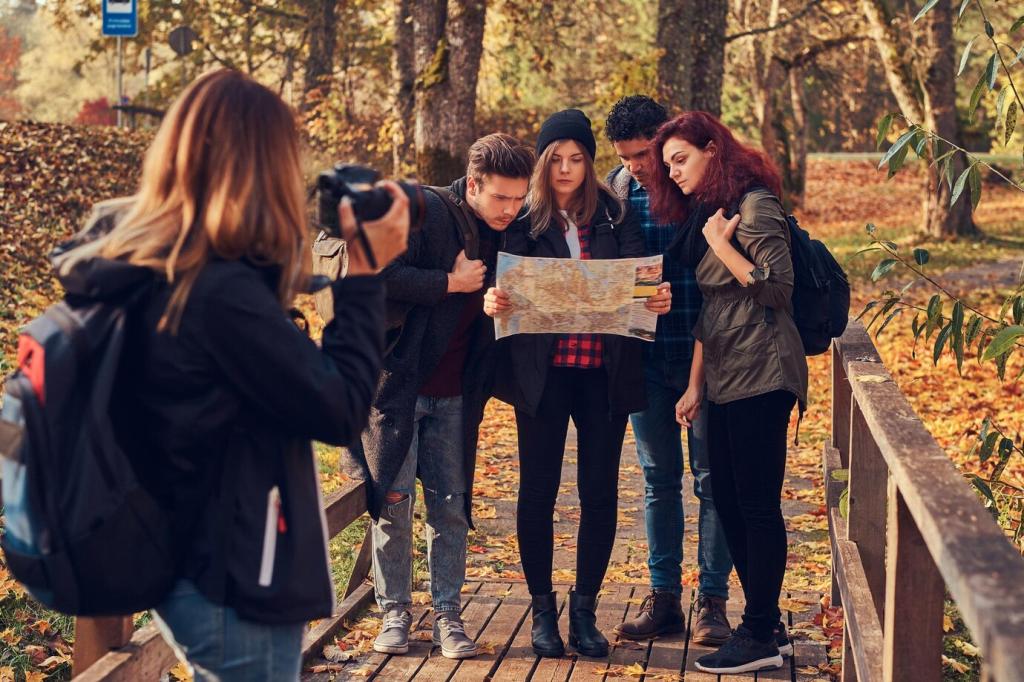Into the Quiet: Safety Tips for Nighttime Camping Adventures
Chosen theme: Safety Tips for Nighttime Camping Adventures. Step confidently into the dark with practical wisdom, real stories, and checklists for calm, cozy nights outdoors. Share your best night hacks and subscribe for new safety insights each week.

Setting Up a Night-Safe Campsite
Read the ground, not just the view
Scan for widow-makers, flood channels, deadfall, and tripping hazards lurking beneath leaf litter. A beautiful vista means little at 2 a.m. if cold air pools or water runs through your tent after a surprise shower.
Place tents with midnight exits in mind
Keep clear paths to latrine areas and bear canisters, avoiding guylines across natural walkways. Keep a small light and shoes staged by the door, so groggy exits never become clumsy, hazardous scrambles in the dark.
Create a night map everyone understands
Before dusk, walk the site together and agree on kitchen, fire, sleeping, and bathroom zones. Mark hazards with reflective cord or a small tag. A shared mental map prevents disorientation when headlamps flare and shadows distort distances.

Smart Lighting Without Blinding Nature
Switch headlamps to red for camp tasks, map checks, and midnight tent exits. Red preserves peripheral vision, reduces insect attraction, and keeps companions comfortable—no more dazzling someone right as they approach hot water or a crackling fire.
Build small, controlled fires
Use an established ring, keep fires knee high, and feed with wrist-thick wood. Keep water and a shovel within reach. Watch for popping sap sending micro-embers onto dry duff; rake a mineral soil buffer before lighting anything.
Night cooking needs extra clearance
Clear a wide area for stoves, stabilize fuel canisters, and shield flames from gusts. Headlamp beams can hide simmering flames; keep hands clear and announce movements. A clipped towel or dangling sleeve near a burner is a classic midnight hazard.
Cold-out means truly cold
Drown, stir, drown again until the ashes feel cool to the touch. Spread coals, then feel for heat with the back of your hand at ground level. If you wouldn’t kneel there, it’s not out. Leave zero smoke, shine, or scent.
Wildlife Awareness and Food Security
Treat scent like a signal flare
Cook and store food well away from tents—ideally 70 strides or more, downwind. Use bear canisters where required, or hang food 12 feet up and 6 feet from trunks. Toothpaste, trash, and cookware need the same disciplined storage.
Understand night sounds before you react
Small animals sound huge in dry leaves. Pause, listen for patterns, and use calm voice cues to alert your group. If large wildlife approaches, stand together, make yourselves big, and back away slowly; never run, never corner an animal.
Keep a clean camp, even when tired
Wash dishes thoroughly, strain greywater, and pack out scraps. Wipe down the kitchen area to erase residue that lingers overnight. A tidy camp not only deters curious critters but also makes morning routines safer and faster.
Navigation, Communication, and Check-Ins
Mark tent lines and key paths with reflective cord or small retroreflective tabs. Pin a tiny strobe near camp only if it won’t disturb wildlife. Note bearings from camp to water, bathroom, and trailhead while there is still ambient light.
Navigation, Communication, and Check-Ins
Three whistle blasts mean help; one long headlamp beam waved side-to-side can guide partners back. Keep radios or phones in airplane mode but accessible. A nightly check-in time prevents solo wanderings from turning into unnecessary searches.
Navigation, Communication, and Check-Ins
Learn terrain shapes, not just trail lines. Ridges, drainages, and prevailing winds help you orient when clouds hide moonlight. Practice short night walks from camp to build confidence, then share your lessons with new campers.
First Aid, Cold Management, and Calm Decisions
Include a lighted thermometer, blister care, elastic wrap, antihistamines, and a compact splint. Keep the kit labeled and reachable from inside the tent. Practice using every item with gloves on to simulate shivering or nervous hands.
Join our mailing list
